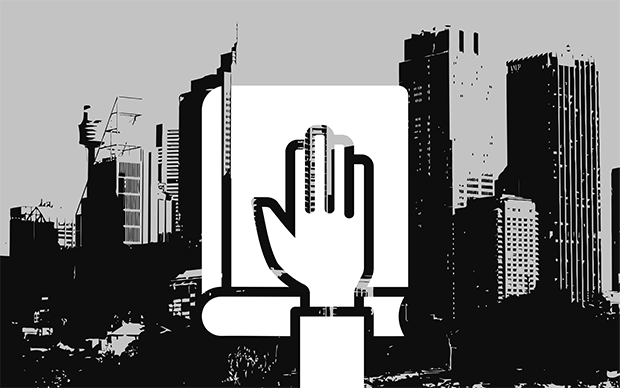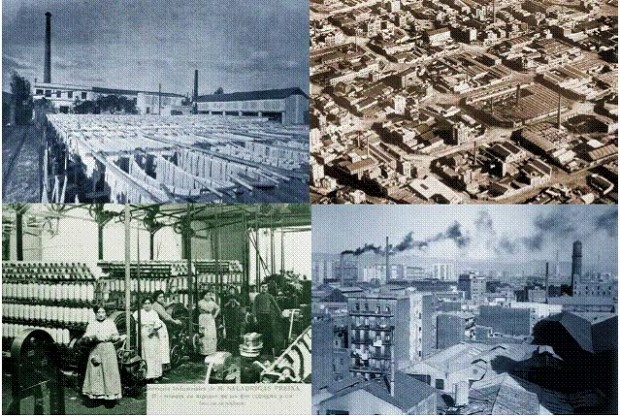Tras el parón veraniego, en ecosistema urbano hemos vuelto con las pilas cargadas y con un objetivo claro: reactivar este blog. No sólo para seguir contándoos nuestros proyectos, nuestras ideas, historias y curiosidades, sino para continuar promoviendo el debate en torno a un urbanismo más justo y sostenible.
Para abrir boca, hemos realizado una recopilación de los posts más leídos del blog (que lleva activo ¡desde el 2007!) y además hemos agregado unos cuantos posts curiosos y un par de series interesantes. Además de un interesante ejercicio de arqueología digital, esta selección nos ha invitado a reflexionar sobre qué temas tuvieron más relevancia en su momento o han ido acumulando más interés con el tiempo.
Aquí va la “cuenta atrás” de posts destacados:
10
Este puesto se lo lleva Presentando local_in, nuestra renovada plataforma de mapeo colectivo. Nuestra aplicación, local_in, es una plataforma de mapeo colectivo en la que los usuarios pueden añadir mensajes, fotos y enlaces geolocalizados, y clasificarlos en categorías y etiquetas completamente adaptadas a cada proyecto. Hace un par de años relanzamos esta herramienta esperando hacerla más accesible y útil a cualquier persona u organización interesada en mapear algo, y últimamente estamos planeando una nueva ronda de desarrollo que la llevará al siguiente nivel. ¡Descarga local_in, úsalo y contribuye con su desarrollo!

Local_In: Online mapping for civic empowerment
9
¿Cuál es el papel del arquitecto? Esta reflexión sobre el rol del arquitecto en la sociedad ocupa el puesto 9 en nuestro top 10, y además generó bastante debate. El post transparenta algunas de las dinámicas internas con las que intentamos reflexionar sobre nuestro trabajo y nuestro propio rol en la sociedad, especialmente en un momento de agitación y transformación. Ya intuíamos que no es suficiente producir arquitectura de calidad ni innovar por innovar, sino que debemos entrar en sintonía con las verdaderas necesidades de la sociedad si queremos crear ciudades más democráticas y habitables.

Rol del Arquitecto
8
El octavo puesto (pero con el primer puesto absoluto en pico de visitas e interacciones en redes) se lo lleva una de las ciudades temporales más grandes del mundo. Una ciudad que se construye, se mueve, se reinventa y “desaparece” una vez al año como un Fénix de sus cenizas, en medio del desierto. Su planeamiento urbano se organiza en torno de una plaza principal con una escultura o estructura (el Burning Man) que funciona como referencia para orientarse. A su alrededor la ciudad funciona, literalmente, como un reloj: Las calles se forman como sombras de un reloj de sol, de forma radial. ¿Cómo se resuelven las necesidades de su población temporal? Conoce aquí la Black Rock City | La ciudad temporal del Burning Man.

Black Rock City | La ciudad temporal del Burning Man
7
El proyecto CUENCA RED | red de espacios dinámicos estuvo dentro del “Plan de Recuperación y Mejoramiento del Espacio Público en el Centro Histórico de Cuenca, Ecuador” en el marco de desarrollo del programa ICES (Iniciativa Ciudades Emergentes y Sostenibles), del BID (Banco Interamericano de Desarrollo) y en conjunto con el GAD Municipal de Cuenca. El centro histórico de Cuenca está incluido en la Lista del Patrimonio Mundial de la UNESCO desde 1990, ahora mismo la ciudad se enfrenta a una importante transformación hacia un nuevo modelo de ciudad, más activo, saludable y dinámico. El objetivo fue identificar las oportunidades que residen en el espacio público de esta ciudad para crear reactivar lugares, mejorar la experiencia urbana y mejorar el ambiente del centro histórico.

Cuenca Red | Red de espacios dinámicos
6
La posición número 6 de este conteo es el Código de Deontología del Arquitecto, Vemos la ciudad como un organismo vivo en constante transformación. Los arquitectos, y los demás profesionales que actúan sobre la ciudad, deben tener conciencia de cómo inciden en ella. Con el objetivo de escenificar estas buenas intenciones, y utilizando como base el código de deontología del médico, ofrecíamos, allá por 2010, esta versión del código ético del arquitecto, esbozando criterios que hasta hoy día venimos aplicando desde [ecosistema urbano].

Código Deontológico del Arquitecto
5
Ecosistema Urbano gana el concurso para el Plan Maestro del Centro Histórico de Asunción. Esta buena noticia ocupa el quinto puesto. La propuesta tenía como objetivo abordar la regeneración integral del centro de la ciudad de una forma inclusiva y convertir el proceso en una referencia, en un momento en que muchas ciudades del mundo estaban empezando a buscar otras formas de enfocar su futuro. Fue, además, uno de nuestros primeros grandes proyectos en Latinoamérica, en la que a día de hoy seguimos acumulando proyectos, experiencias y amigos.

Diagrama resumen de los distintos ámbitos y líneas de trabajo para la regeneración del CHA
4
La ciudad hostil: ángulos y púas contra los ciudadanos habla de cómo en las ciudades se están instalando defensas de diversos tipos contra los “sin techo”. Si decir “defensas” y “contra” os parece exagerado, sólo tenéis que echar un vistazo a algunos de los más comentados y polémicos ejemplos. Las imágenes hablan por sí solas.

La ciudad hostil: ángulos y púas contra los ciudadanos
3
Repensando la relación entre la industria y la ciudad (I). Cuando uno camina por ciudades de pasado industrial, suele toparse con antiguos vestigios fabriles, edificios industriales reconvertidos a nuevos usos o simplemente ruinas que esperan a ser derribadas. ¿Se puede llegar a pensar en una integración de los urbano y lo industrial si estas tendencias de incorporar la nueva industria a la ciudad se consolidan?.

Barcelona, ciudad fabril. (fuente 22@ Barcelona)
2
En segundo lugar tenemos una reflexión más reciente sobre los POPS y la Trump Tower | Espacios públicos de propiedad privada. Los POPS, o Privately Owned Public Spaces, son espacios exteriores o interiores provistos para uso público por una entidad o propietario privado de un edificio a cambio de una concesión en la edificabilidad del solar. La ciudad de Nueva York, por ejemplo, ha generado entorno a 525 espacios con estas características, generando un área pública total que corresponde a ¼ de Central Park. Pablo Santacana nos explica algunas de las particularidades de estos espacios en esta serie de dos artículos.

Trump Tower Foto: Carlo Allegri/Reuters
1
Y por último, el post más visitado de todos los tiempos en este blog: Reinventarse o Morir. Transformación de Centros Comerciales bajo el nuevo paradigma económico/urbano. El concepto de centro comercial, como lo entendemos y experimentamos actualmente, podría tener los días contados. En el post, además de un breve diagnóstico de la situación actual, lanzamos varias propuestas de reconfiguración de centros comerciales a través de la introducción de nuevos programas, en un intento por convertirlos en un espacio mucho más público.

El centro comercial, una tipología que necesita reinventarse.
Si quieres seguir leyendo algo más, dejamos aquí algunos artículos y series que nos hemos encontrado por el camino y nos han interesado o traído buenos recuerdos:
- Kits para niños: involucrando a la ciudadanía más joven en el planeamiento participativo
- El ecobulevar, lleno de vida
- Mapping Parties | mapeando el territorio de forma colaborativa
- Serie de artículos sobre espacios públicos bioclimáticos (english)
- Serie de artículos sobre hallazgos interesantes que hemos encontrado en el camino






























